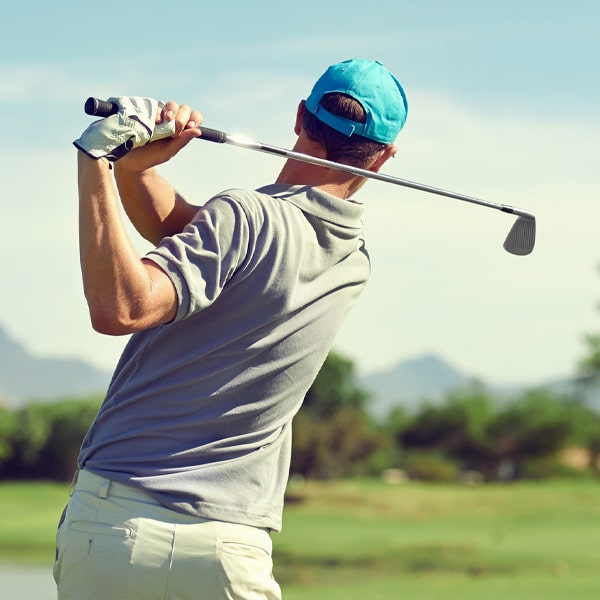Elbow Ulnar Collateral Ligament (UCL) Injuries
UCL Injuries
UCL injuries can be broken up into two groups: acute and chronic. Athletes with an acute UCL tear feel a sudden sharp pain or giving way of the elbow, which may be accompanied by an audible pop. Acute tears can also occur in the traumatic setting in combination with an elbow dislocation.
Chronic UCL tears, on the other hand, are degenerative tears associated with chronic overuse of the elbow. In contrast to a single, sudden injury moment, athletes with a chronic UCL tear may complain of decreased throwing velocity, decreased accuracy, decreased throwing endurance, and pain on the medial aspect of the elbow.
Evaluation of UCL Injuries
Evaluation of a UCL injury starts with a thorough physical examination. In general, an MRI is obtained to evaluate for a tear of the UCL, as well as any other damage that may be present within the elbow. An MRI also helps identify a partial versus a full tear, as well as the quality of the remaining ligament tissue.
Treatment of UCL Injuries
For low-grade partial UCL tears, non-surgical management may be attempted with a cessation of throwing followed by a gradual return to throwing program. In general, steroid injections are not recommended due to concern of weakening the remaining ligament and potentially increasing the risk of tear progression. There is some data that a platelet-rich-plasma (PRP) injection may increase the healing potential of a partial tear of the UCL. Your doctor will discuss if a PRP injection is an option for you.
In contrast to low-grade tears, high-grade partial tears and full-thickness tears are often best treated with surgery in the high-level throwing athlete. Surgical options for a UCL tear include UCL repair with internal brace and UCL reconstruction (aka Tommy John surgery). Dr. Erik Contreras is an expert in UCL surgery and will have a thorough discussion which option may be best for you.
UCL Repair with Internal Brace
UCL repair is a procedure in which the native UCL ligament is repaired back to the bone. More recently, UCL repair has been revolutionized by the addition of an implant called the Internal Brace. The Internal Brace is a high-strength, collagen-coated suture tape that is used to reinforce the native UCL ligament while it is healing. The addition of the internal brace allows for faster recovery and faster return to play, all while leading to an overall stronger repair.
For patients with an acute tear of the UCL, UCL repair with Internal Brace may be an option. In order to perform a repair of the UCL, the ligament quality must be robust. Athletes with chronic degeneration of the UCL may not have a very strong native ligament. In those situations, UCL reconstruction (AKA Tommy John Surgery) may be a better option.
UCL Reconstruction (Tommy John Surgery) with Native Repair & Internal Brace
UCL reconstruction is a procedure in which a new ligament is created in order to replace the native UCL. The new ligament is typically created by harvesting a tendon from the athlete’s forearm called the palmaris longus tendon. The palmaris longus tendon does not contribute to a significant function within the arm, and therefore it can be harvested and used to reconstruct the UCL without a detrimental effect on the athlete’s performance.
In addition to reconstructing the new ligament, Dr. Contreras also performs a repair of the native UCL and adds the Internal Brace. In all, the combination of these 3 procedures – UCL reconstruction, native UCL repair, and UCL Internal brace – results in the strongest possible construct, allowing for accelerated recovery in addition to excellent long-term performance.
Recovery After UCL Surgery
Dr. Contreras performs UCL surgery in the outpatient surgical center. Patients are able to go home the same day.
Patients are in a splint for approximately 1 week, at which point patients are transitioned into a brace and physical therapy begins. The brace is discontinued at 6 weeks and, depending on the athlete, a graduated return to throwing program may begin as early as 4-6 months after surgery.
Treatment for UCL Injuries in Bergen County, NJ
At Cahill Orthopedic, we offer both surgical and nonsurgical treatments for UCL injuries to help athletes get back in the game. Dr. Erik Contreras is fellowship trained in shoulder and elbow surgery, and offers the latest procedures for UCL tears, including Tommy John surgery and repairs with Internal Brace.
If you would like to learn more about UCL treatment or schedule an appointment, please call our office at (201) 489-0022.

The ulnar collateral ligament (UCL) is the ligament on the inside (medial) part of the elbow. It contains three distinct bands: anterior (most important), posterior, and transverse. The function of the UCL is to give stability to the inner part of the elbow joint and resist the forces associated with overhead throwing motions.